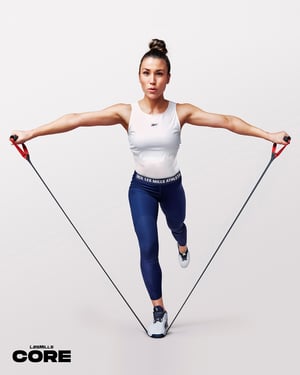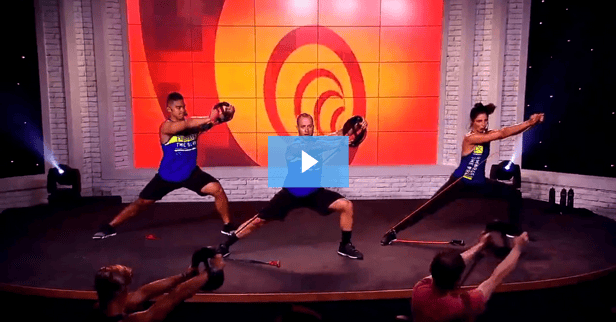 I had a friend call me the other day in a complete panic. She was getting ready to go back to work full time and she felt like she was going to be losing time with her kids by doing so. While listening to her pour her heart out to me about all the second-guessing she was doing, it became clear that everything she was saying was everything I had been thinking. All the thoughts I play over and over in my mind were actually being said out loud.
I had a friend call me the other day in a complete panic. She was getting ready to go back to work full time and she felt like she was going to be losing time with her kids by doing so. While listening to her pour her heart out to me about all the second-guessing she was doing, it became clear that everything she was saying was everything I had been thinking. All the thoughts I play over and over in my mind were actually being said out loud.
As the conversation came to an end and we hung up the phone, I sat and began to really evaluate my own thoughts and feelings. The mind is a powerful tool, and if we aren’t careful it can take complete control over our lives.
Your mind’s power lies within your focus. What I mean by that is that if you are faced with major challenges, it’s easy to grab ahold of thoughts telling you that the challenges can’t be overcome. Because it is so easy for our minds to go there, we have a tendency to fall into the trap of mistaking those thoughts for truth.
Turning Your CAN’TS into CANS
If you are someone whose mind goes to reasons why you can’t do something, it’s time to refocus and retrain your mind to find the reasons why you can do something.
- Replace negative beliefs with the truth about yourself. Obstacles will disappear and you can step into positivity.
- We can change our brains and create new pathways, new modes of living, and new experiences.
- The greatest work we do is on the inside.
- We too often underestimate the power of community in facing new tasks.
- Blame never produces fruitful results, especially when you blame yourself.
- We live with the things that aren’t working until pain or possibility inspires us to overhaul our lives.
Life Is a Roller-coaster
I’m not writing this to tell you that you need to have it all together. It’s totally okay not to; I know I don’t. As a matter of fact, go ask someone who seemingly has it all together and I guarantee you they will either give you a list of what they struggle to manage or they will lie to you.
What I am telling you is that life is a roller-coaster by nature. Sometimes we win, sometimes we lose; sometimes it can be picture-perfect, and other times it can be blemished. We must navigate the ups and downs with the mindset that we will fail, we will triumph, we will have down moments, and we will have moments we’re on top of the world. Change begins to happen when you transform your mind from where you are to where you want to be, whether this means changing your fitness or changing in other areas of your life.
This blog was written by Ashley Duncan, Health/Fitness Instructor. To find out more about the NIFS bloggers, click here.


 The “core” is a fitness buzzword that has rung in people’s ears for some time now. If you have been in the gym in the past 10–15 years, you have heard about the importance of a strong core in performance and for activities of daily living. And it’s so true: a weak center can lead to many issues throughout the entire body, mainly low-back pain and tight hips. I am not reporting anything new here; a strong trunk is super, super important!
The “core” is a fitness buzzword that has rung in people’s ears for some time now. If you have been in the gym in the past 10–15 years, you have heard about the importance of a strong core in performance and for activities of daily living. And it’s so true: a weak center can lead to many issues throughout the entire body, mainly low-back pain and tight hips. I am not reporting anything new here; a strong trunk is super, super important!
 When you begin your fitness quest and are getting started on a new program, finding exercises that are appropriate for you is key to your success. Your fitness staff at NIFS has your back! Training methods and training tools developed from years of research and practice have shown that sometimes a simple exercise done well can be quite effective.
When you begin your fitness quest and are getting started on a new program, finding exercises that are appropriate for you is key to your success. Your fitness staff at NIFS has your back! Training methods and training tools developed from years of research and practice have shown that sometimes a simple exercise done well can be quite effective. There is good reason for confusion surrounding what might arguably be one of America’s favorite spreads, topping everything from toast to popcorn to potatoes. The butter-versus-margarine debate has been a hot topic for the last several decades and is still a slippery subject. We have begun to understand the possible dangers of our high saturated fat consumption to our health. However, at the same time we are told that margarines are “artificial,” while butter is the all-natural choice. Which do we choose?
There is good reason for confusion surrounding what might arguably be one of America’s favorite spreads, topping everything from toast to popcorn to potatoes. The butter-versus-margarine debate has been a hot topic for the last several decades and is still a slippery subject. We have begun to understand the possible dangers of our high saturated fat consumption to our health. However, at the same time we are told that margarines are “artificial,” while butter is the all-natural choice. Which do we choose?